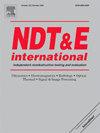Exploring high-energy X-ray phase-contrast microscopy at a diffraction-limited storage ring
IF 4.1
2区 材料科学
Q1 MATERIALS SCIENCE, CHARACTERIZATION & TESTING
引用次数: 0
Abstract
High-energy X-ray microscopy is critical for imaging dense and large-scale materials due to its ability to provide deep penetration and reduced radiation damage. Incorporating phase-contrast imaging enables the visualization of subtle differences in density that traditional absorption techniques cannot detect. Despite these benefits, implementing phase-contrast imaging at high energies () presents significant challenges. The short wavelength of high-energy X-rays reduces spatial coherence and diminishes refraction, thereby limiting phase-contrast effects. The flux of emitted X-ray photons significantly drops at higher energies due to less efficient emission process. All of these challenges degrade X-ray phase-contrast image quality. In this study, we evaluate the feasibility of high-energy X-ray phase-contrast imaging (XPCI) using propagation-based methods. Through rigorous wave propagation simulations, we explored the effects and importance of optimizing the source size and geometrical configurations to enhance image quality. Under optimized conditions at a fourth-generation storage ring, we successfully retrieved phase information of microstructures surrounded by similar materials, such as boron fibers in an aluminum matrix and dual-phase iron. These results provide valuable guidelines for designing high-energy X-ray microscopy experiments, helping to maximize imaging performance while addressing the inherent limitations of using high-energy for XPCI. Ultimately, this study provides essential insights for improving high-energy X-ray microscopy, paving the way for advancing non-destructive testing techniques for a wide range of challenging materials and applications.
探索高能x射线相衬显微镜在衍射限制的存储环
高能x射线显微镜对致密和大型材料成像至关重要,因为它能够提供深穿透和减少辐射损伤。结合相衬成像使传统吸收技术无法检测到的密度的细微差异可视化。尽管有这些优点,但在高能量(70keV)下实现相衬成像存在重大挑战。高能x射线的短波长降低了空间相干性,减少了折射,从而限制了相衬效应。由于发射过程的效率较低,发射的x射线光子的通量在高能量下显著下降。所有这些挑战都会降低x射线相衬图像的质量。在本研究中,我们利用基于传播的方法评估高能x射线相衬成像(XPCI)的可行性。通过严格的波传播模拟,我们探索了优化源尺寸和几何构型对提高图像质量的影响和重要性。在第四代存储环的优化条件下,我们成功地检索了被类似材料包围的微观结构的相信息,如铝基体中的硼纤维和双相铁。这些结果为设计高能x射线显微镜实验提供了有价值的指导,有助于最大限度地提高成像性能,同时解决XPCI使用高能的固有限制。最终,这项研究为改进高能x射线显微镜提供了重要的见解,为推进各种具有挑战性的材料和应用的无损检测技术铺平了道路。
本文章由计算机程序翻译,如有差异,请以英文原文为准。
求助全文
约1分钟内获得全文
求助全文
来源期刊

Ndt & E International
工程技术-材料科学:表征与测试
CiteScore
7.20
自引率
9.50%
发文量
121
审稿时长
55 days
期刊介绍:
NDT&E international publishes peer-reviewed results of original research and development in all categories of the fields of nondestructive testing and evaluation including ultrasonics, electromagnetics, radiography, optical and thermal methods. In addition to traditional NDE topics, the emerging technology area of inspection of civil structures and materials is also emphasized. The journal publishes original papers on research and development of new inspection techniques and methods, as well as on novel and innovative applications of established methods. Papers on NDE sensors and their applications both for inspection and process control, as well as papers describing novel NDE systems for structural health monitoring and their performance in industrial settings are also considered. Other regular features include international news, new equipment and a calendar of forthcoming worldwide meetings. This journal is listed in Current Contents.
 求助内容:
求助内容: 应助结果提醒方式:
应助结果提醒方式:


